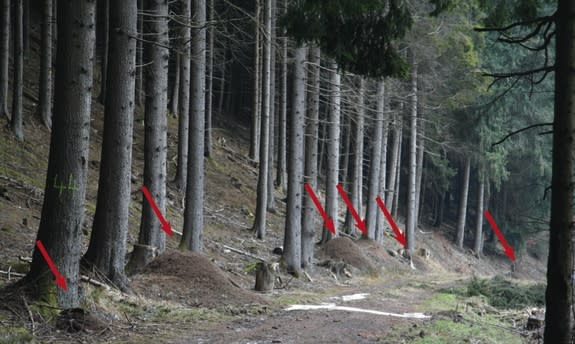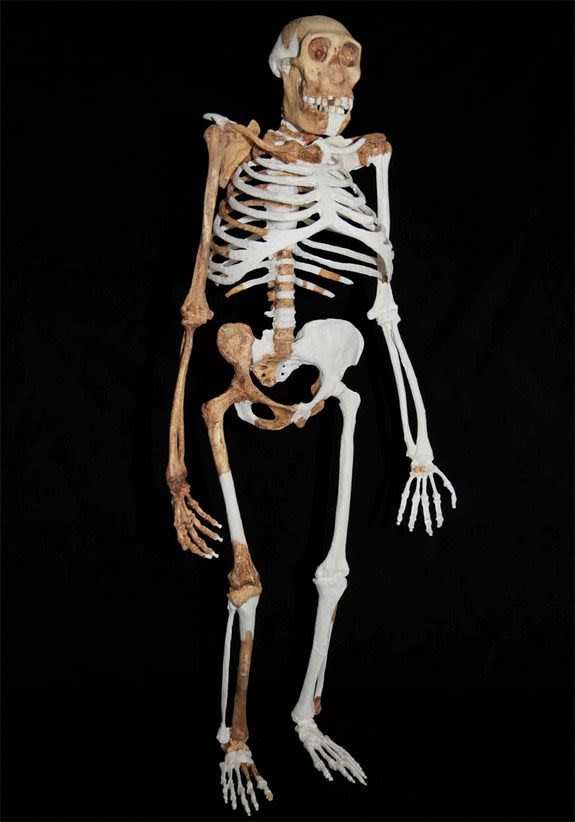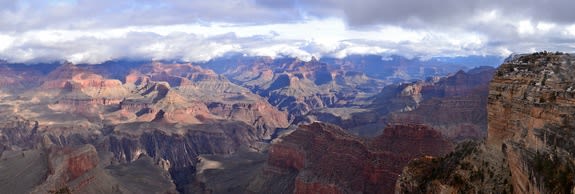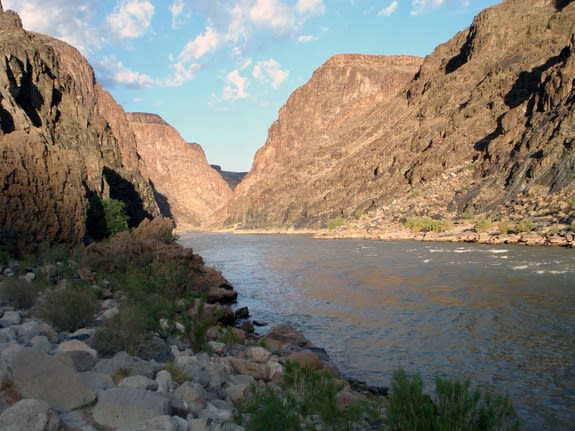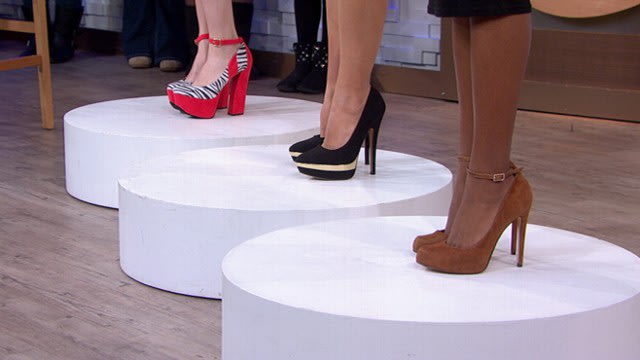For instance, the human ancestors may have moved in an entirely new way, with a somewhat pigeon-toed gait with a twisty trunk, the researchers added.
Thefirst specimens of the extinct species Australopithecus sediba were accidentally discoveredby the 9-year-old son of a scientist in 2008, in an area in South Africa named the Cradle of Humankind, one of the richest fossil sites in Africa. Australopithecus means "southern ape," while sedibameans "fountain" in Sotho, one of the 11 official languages of South Africa, due to how scientists hint the human lineage might spring from this species.
Au. sedibalived nearly 2 million years ago, about the time when scientists think the human lineage Homooriginated. It possessed a bizarre jumble of human and more apelike traits, perhaps revealing this might be the species from which humans' branch of the family tree originated.
"These skeletons are just interesting, wonderful blends of characteristics," researcher Steven Churchill, an evolutionary anthropologist at Duke University, told LiveScience.
The findings, detailed in six papers in the April 12 issue of the journal Science, firm up the idea that Au. sediba was one of humanity's closest ancestors.
Here a composite reconstruction of Au. sediba, which may be humanity's closest relative. The reconstruction isbased on material from a younger male skeleton (MH1), a female skeleton (MH2) and an adult (MH4), and based upon the research
Who was Au. sediba?
Now scientists have probed more deeply into the anatomy of the remarkably well-preserved skeletons of Au. sediba. These include a younger male skeleton, commonly referred to as MH1, and a female skeleton, known as MH2, as well as the shinbone of an adult known as MH4. This is the most comprehensive exam yet of the anatomy of an early member of the hominins — the group that includes modern and extinct human species and their direct ancestors.
Au. sediba possessed long, apelike arms, suggesting it could still climb and possibly hang from trees, perhaps more so than any other australopith — the primates that preceded Homo, and the first to walk bipedally on two feet.
"Its scapula or shoulder blade is most similar in shape to that of orangutans, the most arboreal or tree-dwelling of all the apes," Churchill said. "This suggests climbing was still an important part of its behavior and ecology."
However, Au. sediba may have also possessed fingers one might expect of a toolmaker and tool user — ones potentially suited for precision grasping.
"They're still capable of very powerful grips, which is what you'd need if you were climbing or suspended under a branch," Churchill said. "It looks like a hand good for both tools and climbing."
"For now, however, we don't have any indications of tool use at the site, no examples of tools," researcher Lee Berger, a paleoanthropologist at the University of the Witwatersrand in Johannesburg, told LiveScience.
Odd walkers?
The legs of Au. sediba suggest it moved in an entirely unique way. For instance, its small heel resembled that of a chimp's, hinting it probably walked with an inward rotation of the knee and hip, with its feet slightly twisted. This primitive method of walking might have been a compromise between tree-climbing and upright walking.
"The implications of this study are that multiple forms of bipedalism were once practiced by our early hominin ancestors," Berger said. "Different species of australopiths utilized their anatomy in different ways — some climbed trees, some walked on the ground, and some did both."
The extinct species' teeth are a combination of primitive and humanlike traits. Their features suggest Au. sediba was a close relative of another southern African australopith known as Australopithecus africanus. The researchers say both these species appear more closely related to humans than australopiths from east Africa such as Australopithecus afarensis, most famed for the hominid Lucy and at one time thought to be the closest relative of humans.
"Our research on teeth can't definitively settle if either sediba or africanus is more closely related to humans than the other species," said researcher Debbie Guatelli-Steinberg at Ohio State University. "But our findings do suggest that both are closely related to each other and are more closely related to humans than afarensis."
Au. sedibastood a little more than 4 feet high (1.2 meters). Analysis of its spine revealed it had a humanlike curvature of the lower back. However, its lower back was longer and more flexible than modern humans, and more like primitive, extinct members of Homo.
"We think this feature of its lower trunk may have helped with its locomotion," Berger said. "Humans twist their trunk when we walk, a movement we counter by moving our arms. Maybe sediba was twisting its trunk as well when it moved."
Svelte-chested ancestor
The remains of the upper rib cage or thorax of Au. sediba suggest it was narrow and apelike, different from the broad, cylindrical chest seen in humans.
"The broad thorax we have is unique to humans — the only mammal that doesn't have narrowing at the shoulders is humans," Berger said. "We can lift our thorax to breathe, change the capacity for respiration, which is one of the main reasons humans are good long-distance runners. Chimpanzees don't have that."
However, the less well-preserved lower rib cage fossils were more humanlike. This might have helped accommodate its strange form of walking just as its odd lower back did.
"Everywhere we look in these skeletons, from the jaws on down to the feet, we see evidence of the transition from australopith to Homo; everywhere we see evidence of evolution," said researcher Darryl de Ruiter at Texas A&M University.
All in all, these findings provide support that Au. sediba is one of the closest relatives to early humans.
"We need to find more sediba remains to help fill in the missing pieces of this evolutionary puzzle," Guatelli-Steinberg said.
Discoveries such as Au. sediba "demonstrate the need for further African-based exploration in the rich fossil fields of southern Africa, and additionally demonstrate the tremendous promise of the paleosciences on the continent," Berger said. ( LiveScience.com )
